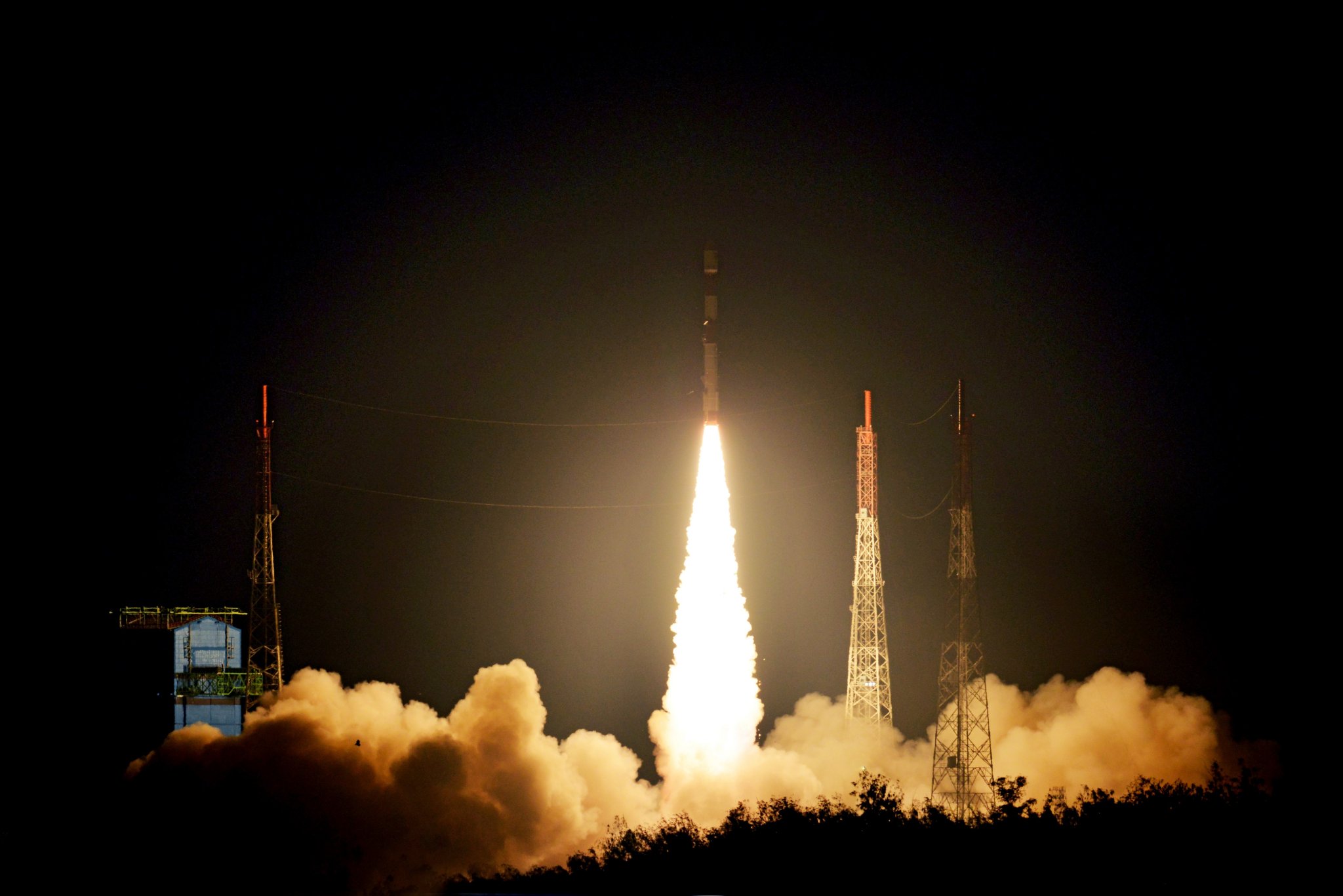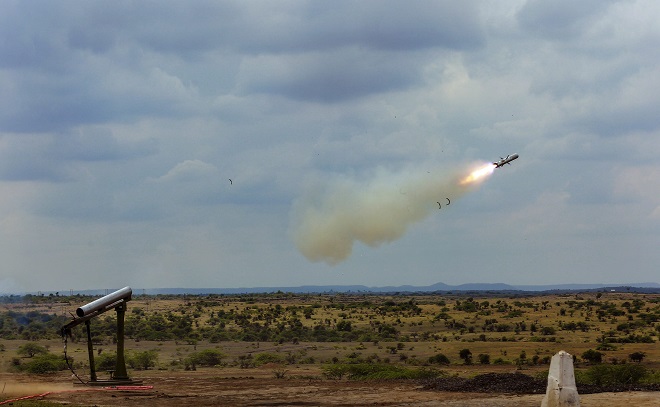
ISRO's PSLV-C42, carrying two foreign satellites, NovaSAR and S1-4, lifts off from first launch pad of Satish Dhawan Space Center in Sriharikota, on Sunday, Sept. 16, 2018. Photo: ISRO.
SRIHARIKOTA, AP (PTI): The Indian Space Research Organisation (ISRO) today launched the NovaSAR and S1-4 earth observation satellites of U.K from the spaceport here and placed them in the designated orbit.
NovaSAR is intended to be used for forest mapping, land use and ice cover monitoring, flood and disaster monitoring.
S1-4 will be used for surveying resources, environment monitoring, urban management and disaster monitoring.
In a night launch, the workhorse PSLV-C42 launch vehicle blasted off from the first launchpad at the Satish Dhawan Space Centre at 10.08 PM.
The PSLV injected the satellites into orbit 17 minutes and 45 seconds after lift off and placed them in a sun synchronous orbit 583 km from the earth.
ISRO chairman K Sivan said the mission was a success and congratulated the scientists.
"Today I am exteremly happy to announce that PSLV-C42 carrying two customer satellites NovaSAR and S1-4 placed them precisely in orbit.
Within the next six months, 10 satellite missions and eight launch vehicle missions would be launced - one every two weeks, he said
ISRO's moon mission would be launched on January 3, 2019 he said.
The two satellites of UK-based Surrey Satellite Technologies Ltd (SSTL), both weighing 889 kg, were launched as per a commercial arrangement between the company and ISRO's
commerical wing - Antrix Corporation Ltd.
ISRO had successfully carried out a similar night launch in 2015 and placed five satellites belonging to SSTL.
The launch comes almost six months after ISRO successfully placed the INRSS-1I navigation satellite in orbit on April 12.
 Previous Article
Previous Article Next Article
Next Article













The Indian Air Force, in its flight trials evaluation report submitted before the Defence Ministry l..
view articleAn insight into the Medium Multi-Role Combat Aircraft competition...
view articleSky enthusiasts can now spot the International Space Station (ISS) commanded by Indian-American astr..
view article